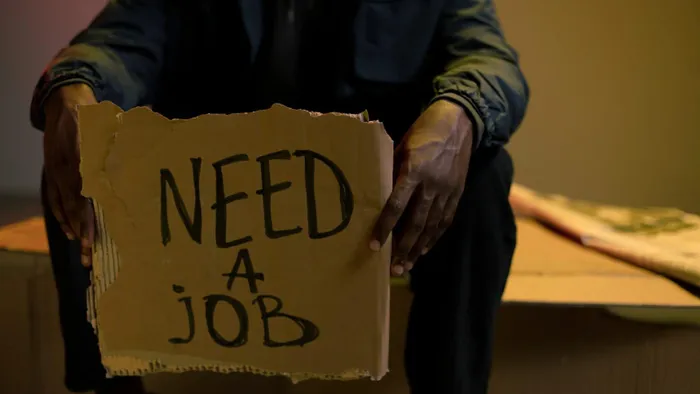
Statistics South Africa had some good news and bad news about joblessness in the country.
Image: Ron Lach/Pexels
This past week Statistics South Africa (StatsSA) released unemployment figures that showed the level had reached 32.9%.
StatsSA's figures showed that job losses were driven by the formal sector, with industries such as trade and construction driving the job loss trend. On the flip side, transport and finance saw net job gains.
The official unemployment rate moved upwards because 291 000 people lost their jobs quarter-on-quarter, dropping the employed workforce to 16.8 million as of March this year, Statistics South Africa said on Tuesday.
North West University (NWU) Business School economist Professor Raymond Parsons said the rise in unemployment raised another red flag.
Parsons said, "The 1% rise in the 1Q 2025 unemployment level again raises another red flag about SA’s weak growth performance. With GDP growth forecasts for 2025 having been progressively reduced by various institutions and economists to about 1.5% and below, it is not unexpected that this should now be reflected in higher unemployment levels."
"The overall total unemployment level is now where it was a year ago and youth unemployment in particular remains at an unacceptable magnitude. The latest rise in unemployment again confirms that economic growth in SA has been too low for too long," Parsons further added.
South Africa's growth forecast is expected to be revised downwards next week as Finance Minister Enoch Godongwana, is set to deliver his third Budget speech, following the Value Added Tax (VAT) controversy that plagued him all year.
With no VAT increase, the minister has been forced to rearrange his budget, with an expected downward revised growth projections for the country, including expenditure.
Parsons further said that there is no magic wand to create jobs overnight.
"As the disappointing unemployment picture is, the cumulative outcome of seasonal, cyclical and structural factors. But the deteriorating employment outlook nonetheless again reinforces the fact that the third Budget on 21 May must be a growth-driven one. It needs to create a policy environment which promotes economic expansion and boosts investor confidence. The Budget must be dedicated to policies and projects that demonstrably support the GNU’s commitment to at least 3% GDP job-rich growth in the medium term," Parsons said.
Casey Sprake, Economist, Anchor Capital, told Business Report that it is clear that SA continues to grapple with a relentless rise in unemployment, casting a shadow over the country’s recovery efforts.
Sprake said, "While recent key reform measures point to a more positive trajectory, this progress has not yet trickled down to many South Africans in the form of job opportunities. Structural challenges, such as a skills gap, labour market rigidities, and the lingering impact of the COVID-19 pandemic, have exacerbated unemployment rates, especially among the youth. As the economy expands, the persistent lack of jobs threatens to widen the inequality gap, undermining social stability and eroding the gains of recent economic advancements,"
"A combination of structural deficiencies, such as a lack of skills, limited access to quality education and training, and inadequate job creation, has resulted in a large portion of the population being unable to find gainful employment. SA’s unemployment problem remains particularly acute among the youth, where high levels of unemployment hinder their prospects and exacerbate social inequalities," Sprake further said.
The youth (age 15-24) unemployment rate has risen again to 62.8%.
"The unemployment rate, according to the expanded definition (which includes those discouraged from seeking work and thus more reflective of the actual number of unemployed South Africans), rose further to 43.1% - concerningly high. This points to longer-term, structural issues within the local economy as it is difficult to reincorporate and entice discouraged work seekers back into the labour force," Sprake added.
"Moreover, in the domestic economy, material job creation has only occurred when GDP growth approaches 3% p.a. Thus, the economy is simply not growing at an adequate rate to sustainably boost long-term employment prospects for South Africans. At the end of the day, SA’s unemployment problem is a complex and multifaceted issue that requires sustained and coordinated efforts from all sectors of society to create inclusive and sustainable employment opportunities for all South Africans," Sprake further said.
BUSINESS REPORT